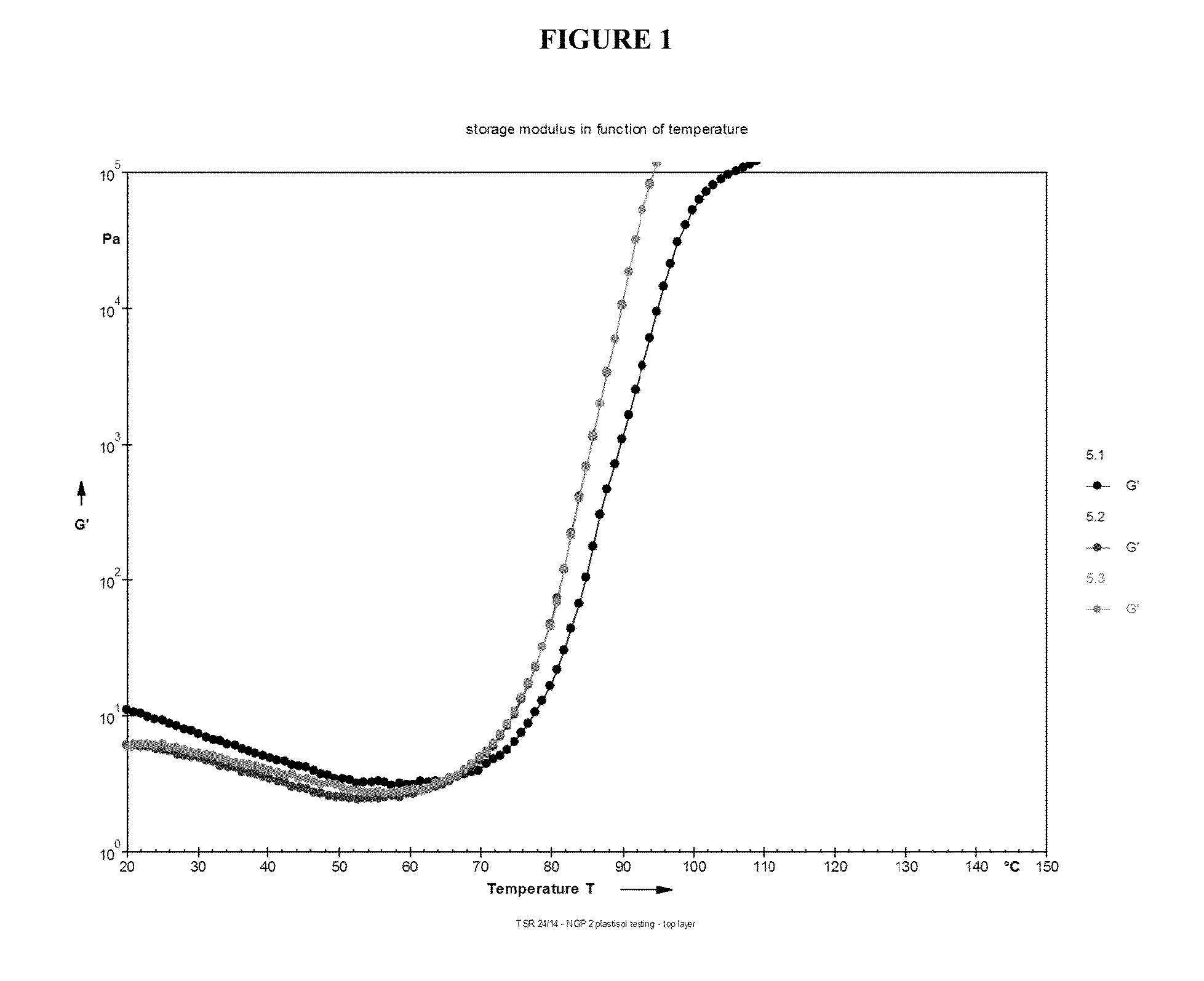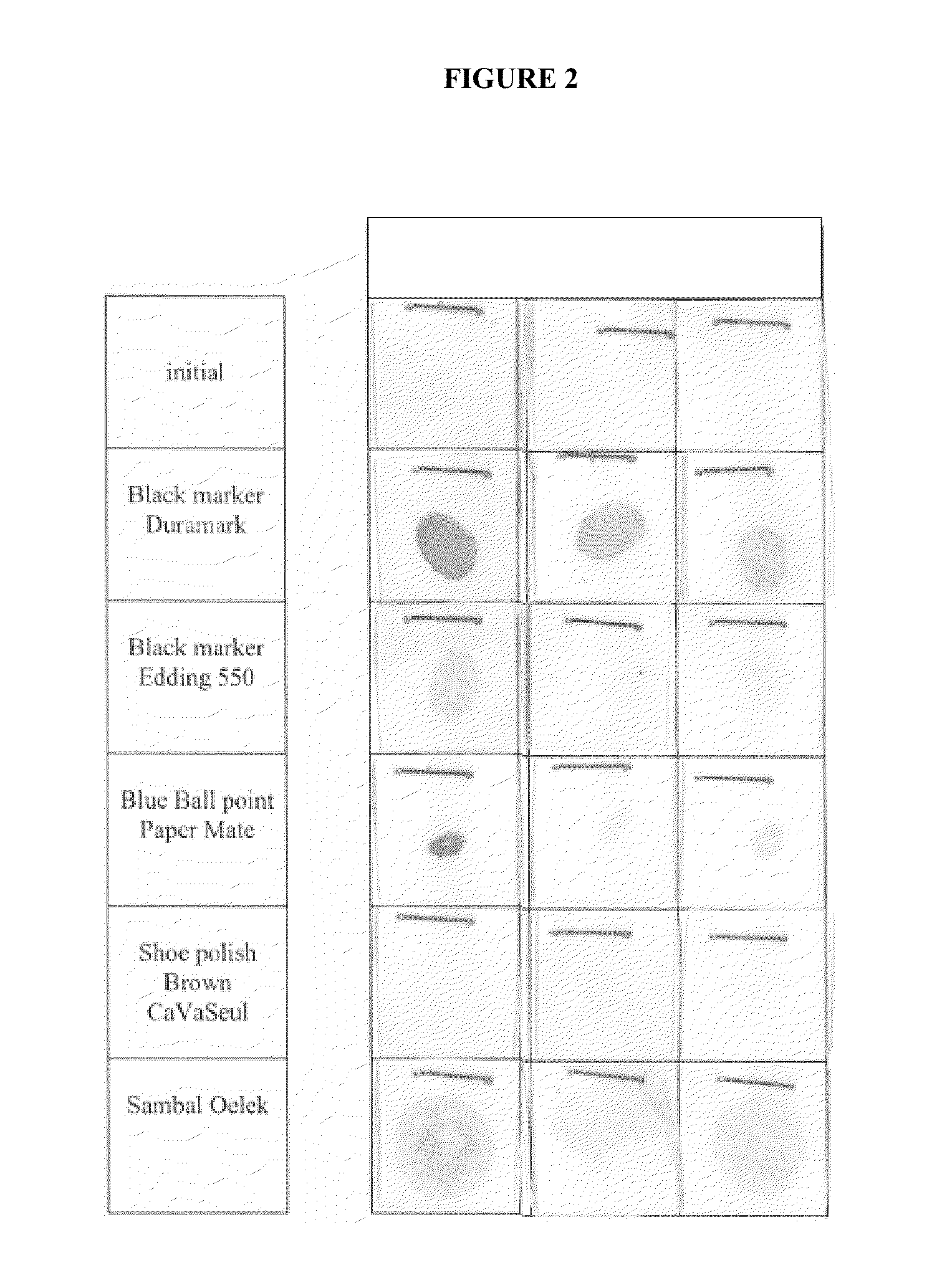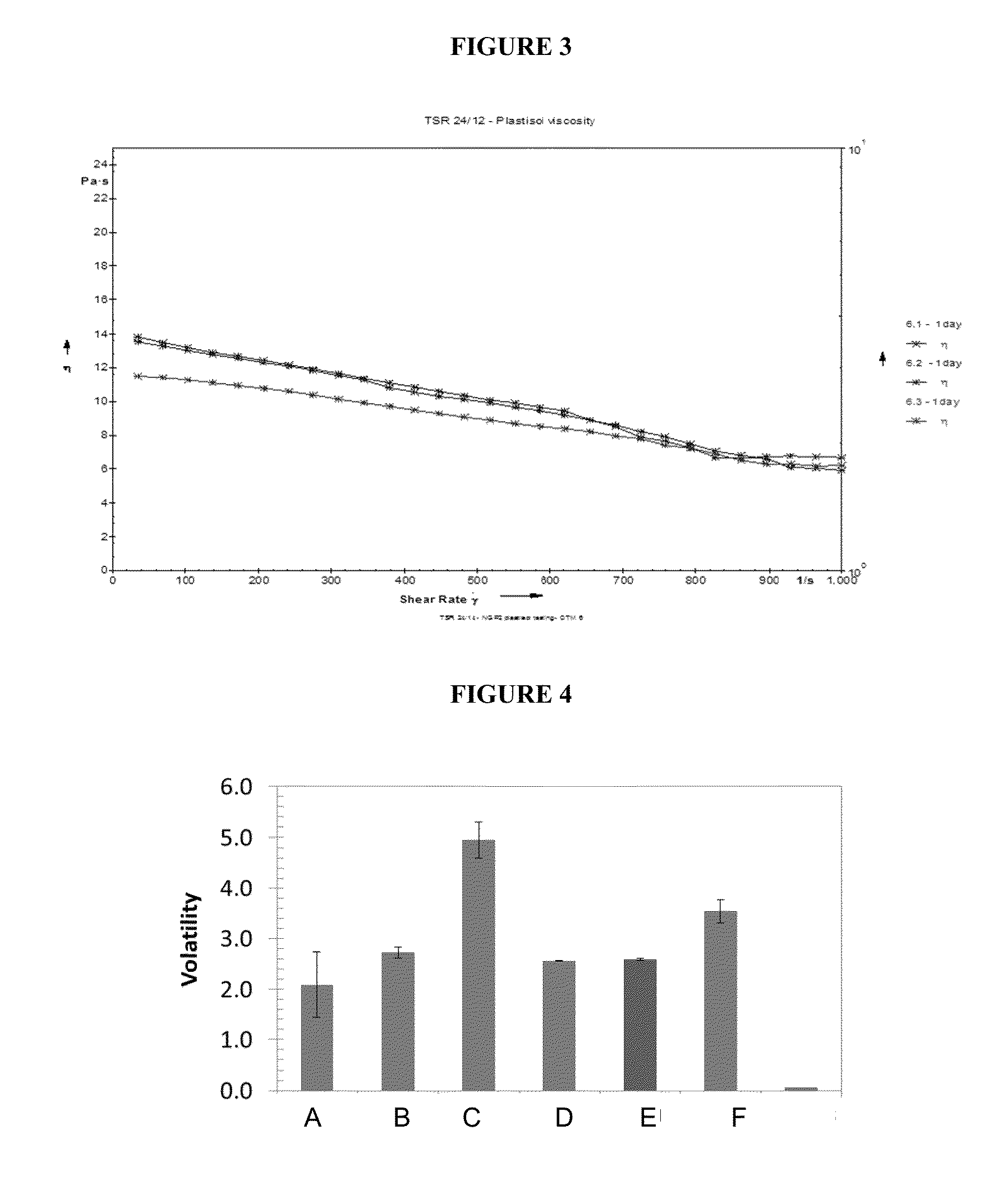Plasticizer Blends and Use Thereof
- Summary
- Abstract
- Description
- Claims
- Application Information
AI Technical Summary
Benefits of technology
Problems solved by technology
Method used
Image
Examples
example 2
Prophetic
[0179]We contemplate that first plasticizer can be advantageously mixed with the second plasticizers listed in the columns 1 to 11 of Table 3. The resulting blend will have improved neat and key properties (as listed in Table 4) and will be advantageous for the use and processing of flexible PVC articles. Hence, contemplated useful plasticizers, blends made of first and second plasticizers and their properties are described in Tables 3, 4 and 5. Note that 12 and 13 can be used as first plasticizer alone or in combination with the methyl biphenyl carboxylate and a second plasticizer.
TABLE 3Summary of neat properties for first plasticizer and second plasticizerSelection of second plasticizers that can advantageously mixed with first plasticizerFirst Plasticizer1234567PropertiesMethylMono-1-21-4 CyclohexanoateAdipateTOTM / biphenylBenzoateCyclohexanoateTINTMcarboxylateCarbonC9-C10C9-C13C7-C8C9-C10C4-C8C9-C10C7-C10C8-C9NumberExample ofMB10DPEHDINCHDINATOTMcommercialgradeNeat Visc...
example 5
Example of PVC Plastisol Formulations for a Flooring Wear Layer
[0180]
5.15.25.3FormulationsphrphrphrPVC Solvin ™ 382NG PVC808080PVC Solvin ™ 266 SF PVC202020Jayflex ™ DINP403′methyl biphenyl 4 isodecyl carboxylate30Blend of 3′methyl biphenyl 4 isodecyl30carboxylate with 4′methyl biphenyl 4isodecyl carboxylate in ratio 50% / 50%Jayflex ™ MB10 (isodecyl mono benzoate)1010Stabilizer (Barostab ™ CT9183XRF)222Plastisol viscosity after 2 hours (mPa · s)700054004900Plastisol viscosity after 1 day (mPa · s)670051505000Plastisol gelation temperature959090(° C.) G′@ 104 PaPlastisol gelation temp.1069494(° C.) G′@ 105 Pa
[0181]PVC plastisols were prepared by mixing in a Hobart mixer. The plastisols were prepared with 100 parts PVC (Solvin 382 NG), 40 parts of ester as shown above, and 2 parts of a conventional CaZn stabilizer.
[0182]The gelation temperatures of the plastisols, were determined by an Anton Paar Physica Rheometer MCR 301. The instrument was used in oscillation mode, frequency 1 hz, am...
example 6
Examples of PVC Plastisols for a Flooring Impregnation Layer
[0186]
6.16.26.3FormulationsphrphrphrVinnolit ™ P4472 PVC707070Solvin ™ 266 SF PVC303030Jayflex ™ DINP703′methyl biphenyl 4 isodecyl carboxylate55Blend of 3′methyl biphenyl 4 isodecyl55carboxylate with 4′methyl biphenyl 4isodecyl carboxylate in ratio 50% / 50%Jayflex ™ MB101515Exxsol ™ D100444Stabilizer (Barostab ™ CT9183XRF)222Mircodol ™ A 200180180180Plastisol Gelation Temperature118109109(G′ at 104 Pa, ° C.)Plastisol Gelation Temperature126117117(G′ at 105 Pa, ° C.)
[0187]Dynamic mechanical analysis of the plastisols, as they were heated to final fusion, gave an initial gelation temperature of respectively 118° C. and 126° C. (G′ (Elastic modulus) is equal to respectively 104 Pa and 105 Pa) for DINP while the mixture of 3′ methyl biphenyl 4 isodecyl carboxylate and isodecyl benzoate gave a lower initial gelation temperature of respectively 109° C. and 117° C., while the mixture of 3′ methyl biphenyl 4 isodecyl carboxylate wi...
PUM
| Property | Measurement | Unit |
|---|---|---|
| Fraction | aaaaa | aaaaa |
| Fraction | aaaaa | aaaaa |
| Percent by mass | aaaaa | aaaaa |
Abstract
Description
Claims
Application Information
 Login to View More
Login to View More - R&D
- Intellectual Property
- Life Sciences
- Materials
- Tech Scout
- Unparalleled Data Quality
- Higher Quality Content
- 60% Fewer Hallucinations
Browse by: Latest US Patents, China's latest patents, Technical Efficacy Thesaurus, Application Domain, Technology Topic, Popular Technical Reports.
© 2025 PatSnap. All rights reserved.Legal|Privacy policy|Modern Slavery Act Transparency Statement|Sitemap|About US| Contact US: help@patsnap.com



